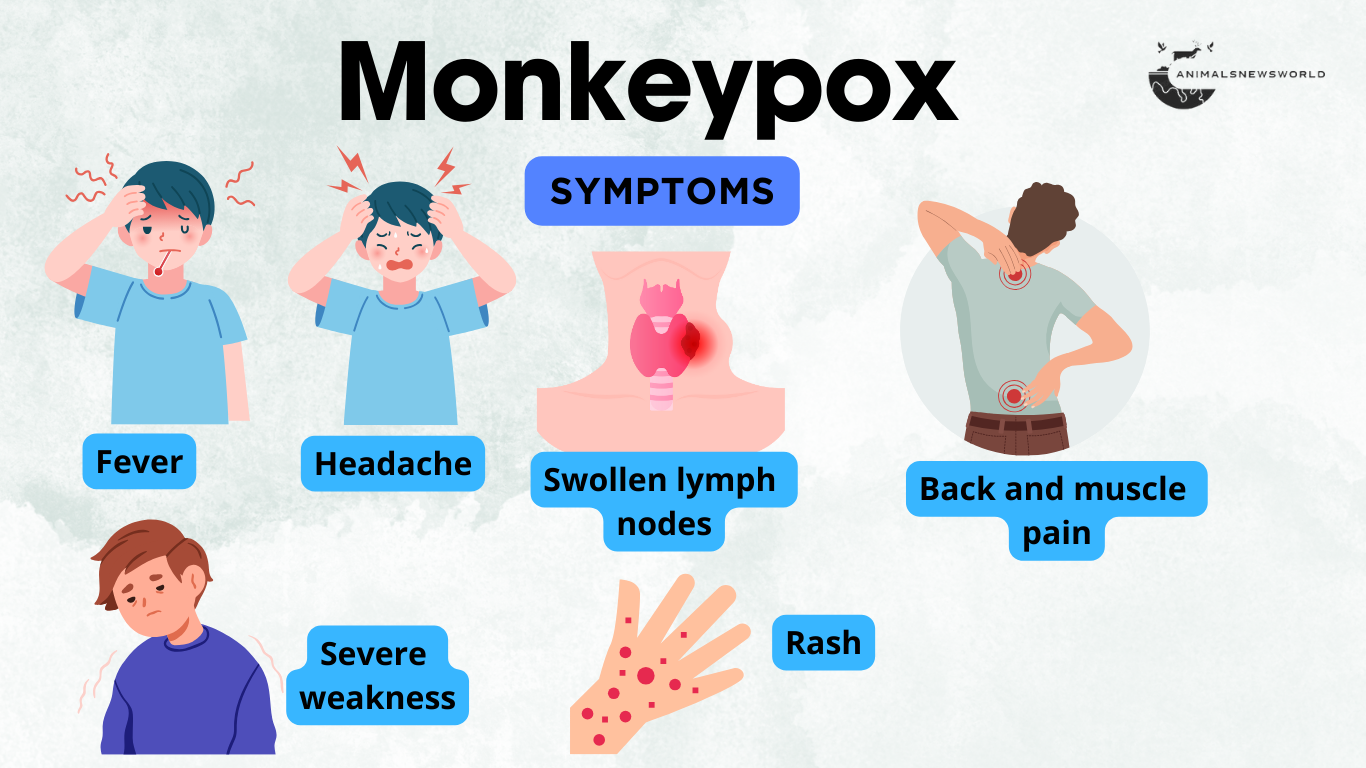Monkeypox: Why was it declared a global emergency?

The World Health Organization (WHO) has announced the most recent outbreak of monkey pox in Africa as a “public health emergency of international concern,” a group used in the past for the Ebola outbreak, Coved-19, and the high incidence of monkey pox in Europe in 2022.
In her report published by the British newspaper The Guardian, writer Kat Lai said that many countries in Africa are experiencing more cases of monkeypox, where the killer virus crosses national borders, with fears that it could cause a major global outbreak.
What is monkey pox?
According to the writer, monkey pox is an infectious disease caused by a virus, usually with flu-like symptoms such as fever, chills, muscle pains, and a rash that begins in the form of stains that turn into liquid-filled bulls and eventually form crusts.
There are two widely different types, known as “subdivisions,” the first group once known as branches of the Congo Basin, and the second category as branches of West Africa, both of which can be fatal, although the first group has historically recorded a higher mortality rate.
What does an emergency announcement by the World Health Organization mean?
According to the author, the WHO Emergency Declaration aims at urging donor agencies and states to act, urging medical experts to speed up access to testing, vaccines, and therapeutic medicines in affected areas, and launching campaigns to reduce the stigma surrounding viruses, but the global response to previous declarations has been mixed.
General Dr. Jan Kasia, Director of the Centers for Disease Control and Prevention in Africa, said that the Agency’s announcement of a public health emergency was aimed at “mobilizing our institutions, collective will, and resources to act quickly and decisively,” and appealed to Africa’s international partners for assistance, saying that the escalation of situations in Africa had been largely ignored.
Michael Marks, Professor of Medicine at the London College of Health and Tropical Medicine, said that “it is clear that current control strategies are not working and there is a clear need for more resources,” adding that “If the global emergency announcement is the mechanism to open these things, it is justified.”
Where does infection occur?

According to the author, according to a briefing by the Centre for Disease Control and Prevention in Africa, 34 states in Africa either report injuries or are “high-risk.”
The Democratic Republic of the Congo is experiencing a severe outbreak, with more than 14,000 casualties and 524 deaths recorded since the beginning of 2024. The outbreak in the Democratic Republic of the Congo is not unusual, but this year’s figure does correspond to the entire total of 2023 and includes cases in provinces not previously affected.
There are also reported cases of infection in Burundi, Kenya, Rwanda, and Uganda, neighbouring states of the Democratic Republic of the Congo, where no injuries have been recorded before.
Why are the injuries rising now?
The author referred to the discovery of a new branch of the first strain, the first dynasty B, in the eastern Democratic Republic of the Congo and confirmed it in Kenya, Rwanda, and Uganda. Scientists believe that this variable plays a role in proliferation.
In the past, the first strain was usually spread through people who were eating infected prey meat, and the first strain spreads from one person to another, mostly through sexual contact, but also through face-to-face physical contact, a bed, or contaminated towels.
The WHO President, Dr. Rosamund Lewis, said, “We don’t know if it’s more mobile, but it’s moving in an effective way.”

Other forms of virus remain widespread, with the Democratic Republic of the Congo also registering cases of first-line A, as well as the Central African Republic, and the second genesis was reported in Cameroon, Côte d’Ivoire, Liberia, Nigeria, and South Africa, according to the World Health Organization.
The increase is amid high levels of insecurity in the region, and the climate crisis that brings human beings closer to nature, according to Dr. Jean Kasia, President of the Centre for Disease Control in Africa.
How does it spread, and why are children disproportionately affected?
The virus crosses the border with infected persons in transit, and Kenyan authorities diagnosed monkey pox disease with a long-distance truck driver who was also in Rwanda, Tanzania, and Uganda.
Monkeypox is also spread through sexual intercourse, and sex workers originally accounted for a high proportion of infected people.
During the 2022 global apepox outbreak, gay and bisexual men formed the vast majority of cases, and the virus was mostly spread through close contact.
Although some similar patterns have been observed in Africa, children under the age of 15 now account for more than 70% of cases of monkey pox and 85% of deaths in the Congo.
Experts said that this might reflect differences in their immune systems, as high malnutrition rates make children vulnerable to infection. While older people in the region may have received a smallpox vaccine that provides some protection, this is not the case for younger generations.
Greg Ram, Director of Save the Children in the Congo, said that the organization was particularly concerned about the prevalence of amoxicillin in crowded refugee camps in the east, pointing to the presence of 345,000 children “infested in tents in unhygienic conditions.”
Do we have vaccines?

Vaccination program plans are still under review but are likely to involve tracking and vaccinating cases and targeting groups such as people living with HIV who appear to be more vulnerable to serious diseases.
WHO has launched an emergency vaccine use list, which allows organizations such as Javi and UNICEF to purchase vaccines for distribution.
What happened with the last big outbreak?
The author concluded the report by saying that in 2022, a global epidemic will spread from Europe, with a particular impact on homosexual communities. In July of that year, the World Health Organization (WHO) declared a state of public health emergency, published two-track programs with universal vaccination, and lifted the emergency in May 2023 after some 90,000 people had been injured.
Source: Guardian




